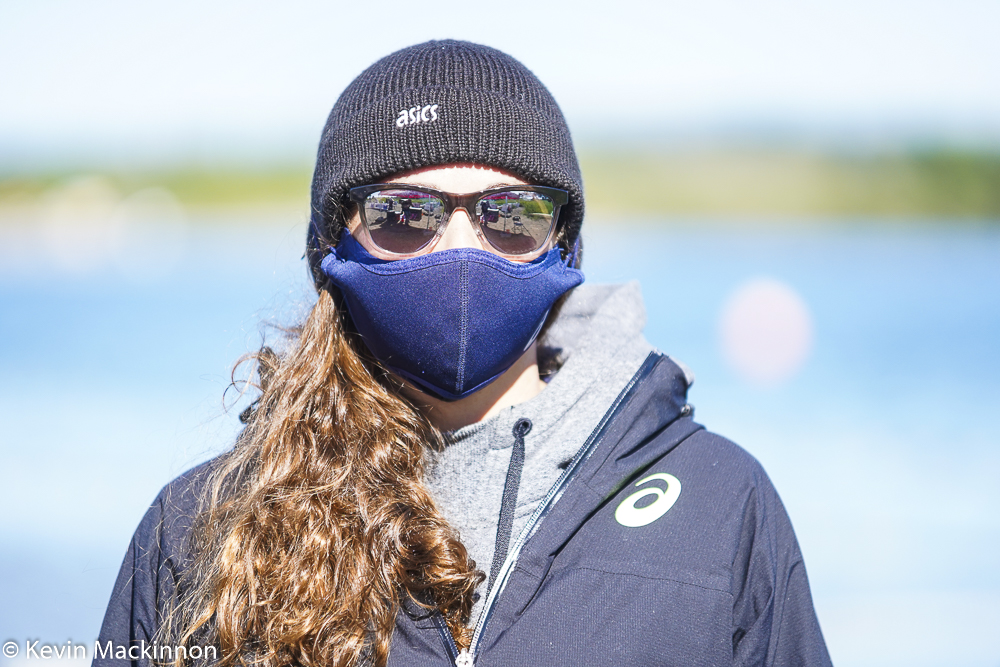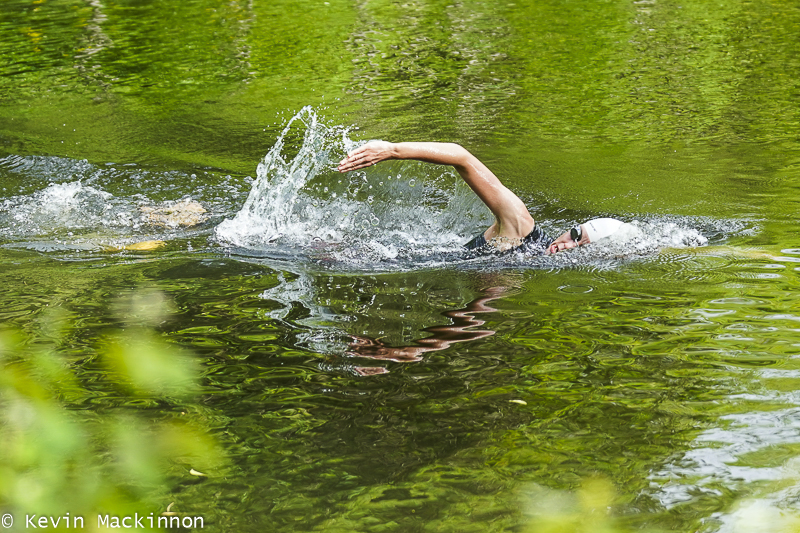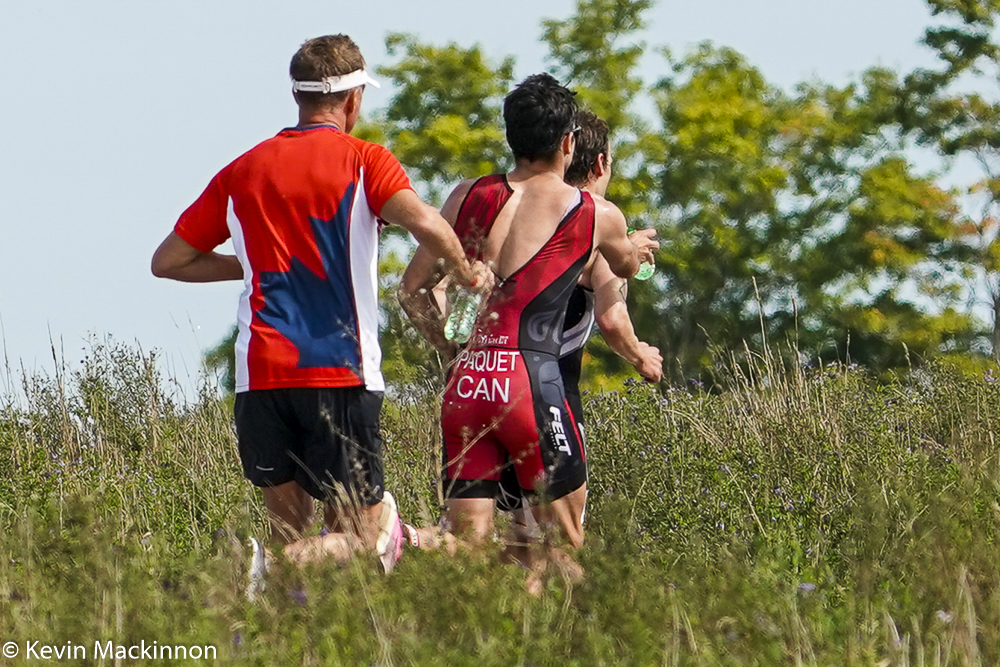What is triathlon going to look like post-pandemic?
Now is the time to focus on what can be done and less on what we shouldn't be doing
 Photo by:
Kevin Mackinnon
Photo by:
Kevin Mackinnon
“Better to light a single candle than to curse the darkness.”
William L. Watkinson 1907
When the New York Yankees played the Major League Baseball defending champions, the Washington Nationals, in the opening game of the 2020 major league baseball season, there weren’t any fans in the stadium. The game was televised and had record viewership – over four million fans tuned in, making it the most-watched opening-day baseball game ever. The players got paid. The owners made money. While the league has had hiccups with COVID-19 outbreaks, there was a baseball season.
When the pandemic first hit, the mainstream sport industry shifted into high gear. They asked themselves, “What do we need to do to make sure none of us miss a pay cheque?” And they had a hungry fan base spurring them into action.
But around the world, endurance events are being cancelled. While some smaller events may take place, for the most part triathlon has been cancelled in 2020. Our sport doesn’t have the lobbying power, the spectators or the money behind it that sports like baseball or hockey possess. We also have challenges those other sports aren’t burdened with. While they have five, nine or twelve players a side taking the field or court, we have thousands crowding into rolling start corrals, waiting up to an hour to get in the water. Large groups of people gathering to sweat and breathe heavily together is not a good idea at the moment.
But the pandemic won’t last forever and, while COVID may be with us for a very long time, treatments, vaccines and expanding knowledge about the illness will eventually get us to a place where racing will be possible again. What will the sport look like when that time arrives? And, more importantly, what should be done between now and then to ensure it’s in a healthy state when it does?
Right now a lot of people out there are quite happy to tell us all what we should not be doing. The list is stark: don’t train in groups; shut the pools down; cancel races. Effectively the message is that we should stop what we’re doing and be afraid. As is so often the case, it’s folks with jobs telling those without that they’ll need to make more sacrifices. Even when they’re right, it’s a hard buy in.

For some the pandemic has had little to no negative affect on their athletic life. These are the process-oriented athletes who like to train alone and care little about racing. They’re missing the pool, but are just as happy swimming in open water for as long as they’re able. And, while this group is sizable, they make up the minority of the athletes who keep the industry thriving. Most of that group need something to train for. To keep those athletes in the sport we need to find things for them to focus on to relieve their competitive urges. It is likely, at least in the short term, that in order for that to happen we’ll have to go through a reset of sorts. A return to the grassroots with “events” being organized by local coaches and clubs.
“We’ll meet this Sunday at the lake at 8 o’clock – here’s the route.”
Once you’ve taken part in the spectacle and pageantry of an iconic Ironman race, taking part in a sprint event where you have to lock your bike in the trunk of your car before you start running so no one steals it might seem a little anti-climatic, but there’s no better way to get in touch with the roots of the sport. We start small, but we start, and we evolve as the experts let us know it’s safe to do so.
I’ve had endless conversations, taken part in Zoom town halls, read numerous forums and the themes are the same – lots of talk about rules and liability, and very little about rebuilding and growth.
In those conversations, a word that you hear a lot is “optics.” We can’t do this because it doesn’t look good. Stay off social media because it doesn’t look good.
But instead of talking about what doesn’t look good, why don’t we talk about what is good. The World Health Organization (WHO) now says it is OK to exercise with a friend, as long as it is outdoors and you stay a meter apart. So why are some governing bodies mandating that we should be up to 20 meters apart? Why aren’t we listening to the experts?
Local clubs and coaches need organize small events and we, all of us including our governing bodies, need to support both the events and those folks who are willing to take the time to make them happen. And we shouldn’t begrudge them if they try to make a dollar or two doing it. It’s likely they’ve lost a pretty big chunk of their income in the last few months. We want those coaches and clubs to be here when the clouds clear.
A few of our local pools are reopening as I’m writing this. They’re starting out small, but they’re starting out, and they deserve support. Still, we need to help them come up with appropriate policies. Does it make sense to have four lanes taken up by four swimmers who are all within the same bubble? Sure, the logistics might be a challenge to figure out, but swimming with my partner two lanes over doesn’t make sense when there is so much demand for lane space.
We have to remember that everyone is doing their best. It doesn’t help for me to start mouthing off about how the facility director should be organizing the reopening of the pool. That director might, and probably does, have concerns that I haven’t considered. Applaud the efforts to get things going, but always press forward and make sure limitations aren’t being imposed to simply satisfy optics.

In the early stages of the pandemic, Ironman announced that one of the ideas they were looking at was to limit aid stations and encourage racers to be self sufficient. At the time, I thought, “Well, if that’s how it has to be then that’s how it will be.” But now we know that’s not how it has to be. We have new information, which means we come to new conclusions. Fewer aid stations means more crowded aid stations, and well thought out stations with athletes passing through quickly can be safe. One less thing to worry about. One small step back to normalcy.
Now is not the time to be a doomsayer or a selfish prat. Are you taking part in a class action suit to force race directors to return your fees? Those of us in the know are hoping desperately that you not only fail in your bid, but fail miserably. If those race directors are forced into bankruptcy, then it’s just another spadeful of dirt on the triathlon grave. You signed the waiver. You should have read it.
There are some positive things happening now as well. Anyone who’s tried to get a bike tune-up in my area is getting a rude awaking. The bike shops are slammed. With so many people being shut out of their gyms they’re turning elsewhere for exercise options. There is no doubt that a percentage of the people who take up cycling will discover the same love that we all did and we’ll find them looking into clubs and coaching. It’s both an opportunity for growth, and a reminder that we will be subject to the same phenomena: If triathletes don’t have an option to engage, then many will look elsewhere to do so, while some will not return Let’s all try to make sure that doesn’t happen.
I don’t pretend to have all the answers. What I’m saying, for those of us who love the sport and hope to see it return to some semblance of normalcy, we need to ask ourselves if we are doing the right thing. Focus more on what can be done and less on what we shouldn’t be doing.
Clint Lien is the head coach of Victoria’s Mercury Rising Triathlon www.mercuryrisingtriathlon.com.
This story originally appeared in the September & October issue of Triathlon Magazine Canada.
